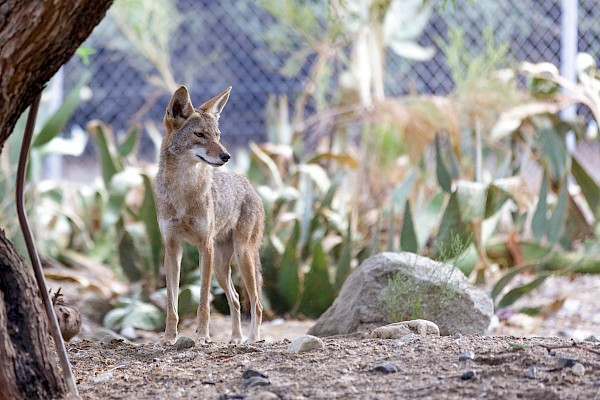

Coyote
Canis latransFamily
Canidae, the dog family.Conservation Status
Least Concern, IUCN; commonDistribution
North and Central America.Habitat
All terrestrial habitats.Factoid
Their scientific name means “Barking dog”.This highly adaptable opportunistic omnivore seems to prefer rodents and jackrabbits, but will eat reptiles, birds, arthropods (scorpions, crickets) and plant material such as juniper seeds, screw beans, fan palm fruit and dates. A crepuscular and nocturnal hunter, they are valuable as rodent control. Their only predator is Man.
Coyotes are dog-like, sandy-colored, with erect ears. They roam extensively throughout their territory, hunting, resting and sleeping wherever they are comfortable, living in a den only when raising pups.
Coyotes usually mate for life and breeding takes place between January and March. The gestation period is 63 days and one litter per year of 1-12 pups (average 4 to 5), is born and raised in a den or rock crevice. Pups are born blind, but furred, will nurse for 5 to7 weeks and begin to leave den at 3 weeks, but it is 6 weeks before they really begin to run with their parents when they all abandon the den. If you see a group of 3-6 coyotes, it is most likely a mated pair and their young of the year, or perhaps a group of litter mates. Coyotes do not have large packs as some wolves do. Their potential lifespan in the wild is about 13 years and in captivity is 15-20 years. They do not make good pets.
Coyotes communicate using scent and body language as well as vocalization.









